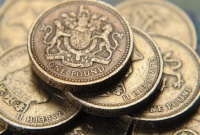Forex. The outlook on the currency pair GBPJPY

fundamental analysis
Initially it was assumed that Brexit consequences for the UK economy will be more serious than we can see at the moment. Statistics show that the GDP in the second quarter of this year grew by 0.7% year on year - 2.1%, as evidenced by the final ONS data. In this earlier on the growth of the economy in the II quarter at 0, 6% qoq and 1.9% yoy. Revision of the indicators for the II quarter due to the fact that the data on the services sector and business investment were better than expected. Investments grew by 1.6% in quarterly terms, household spending - by 0.9%, despite the fact that government spending has not changed.
In addition, consumer confidence improved to -1 points in September after August -7 points. The forecast assumed only -5 points. This is the strongest monthly increase this year.
However, apparently, in the future implications Brexit will be more tangible. In particular, the Bank of England Deputy Minush Shafiq argues that the economy will grow slower than expected and is likely to require further monetary stimulus. This, of course, can provide some support for the British economy, but at the same time have a negative impact on the positions of the pound.
As for the general attitude of investors, according to a survey of 115 financial companies, conducted by CBI and PwC's, the level of optimism in the financial services sector is at its lowest point since the days of 2009, and the latest data on purchases UK zolotoobreznyh bonds by foreign investors may conclude growing outflow of capital.
Jena
This week the Japanese yen came under pressure due to the unexpected results of the OPEC meeting in Algeria.As a result, the stock market rose and the yen weakened, as with respect to its interest decreased as asset safe zone.
In addition, the decrease in the yen contributed to the decision of the Bank of Japan to abandon the benchmark of the monetary base, as one of the main targets, going to targeting the yield on 10-year government bonds at current levels near zero, stating that the program of quantitative easing will continue until inflation not "exceed" 2%. All this creates a positive sentiment towards Japanese assets, which had a certain amount of pressure on the yen.
However, managing the Bank of Japan Haruhiko Kuroda expressed that "the bank is ready to use all available policy instruments." However, he stressed that the purchase of government debt by the Bank of Japan may not reach 80 trillion yen per year. For many investors, this raises concerns that the Bank of Japan is able to move to curtail programs to mitigate the monetary policy, which will be a stimulus for the growth of the yen.
With this newly released statistics, according to which the Japanese economy is showing not the best dynamics.Retail sales in Japan in August fell by 1.1% m / m, after growth of 1.5% m / m in July, the core consumer price index, published by the Bureau of Statistics of Japan, according to the results of August fell to -0.5%, compared the same of the previous year (the sixth month in a row). Also left negative data on unemployment, industrial production and household spending. Thus, until much concrete and effective steps by the regulator (other than claims), there is a risk of further strengthening of the yen.
Technical analysis
Currently, there is consolidation, the price still can not break through the zone of demand in the area of 129.000-130.000. However, there is no reason to suppose the end of a downtrend. As we know, this week the couple received significant support against a background of positive statistics from the UK, as well as on the background of OPEC decisions and statements of the Bank of Japan. Nevertheless, despite all these factors, the couple this week, only slightly played their fall. After testing the next resistance level of around 132.300 price immediately retreated, leaving behind a pinbar, almost devoid of the body. Also, the price went up to the trend line, which is the upper limit of Descending Triangle chart pattern, which is considered bearish. All this speaks in favor of continuing downward trend.
conclusions
Apparently, we should expect the continuation of the bearish trend. However, I admit that the market is not played until the end of fundamentals that have supported the pair this week, and could still carry out a correction to the upper levels of resistance, such as 135,000 or even 138.500 (which is unlikely). In addition, good economic data for pound may well cause further continuation of the consolidation of the existing range. But in the longer term the pair will continue to decline, so that the long positions would be quite risky. As for short positions, they would be wise to open steady after the breakdown level of 129.000.

According to the materials of Alpari


